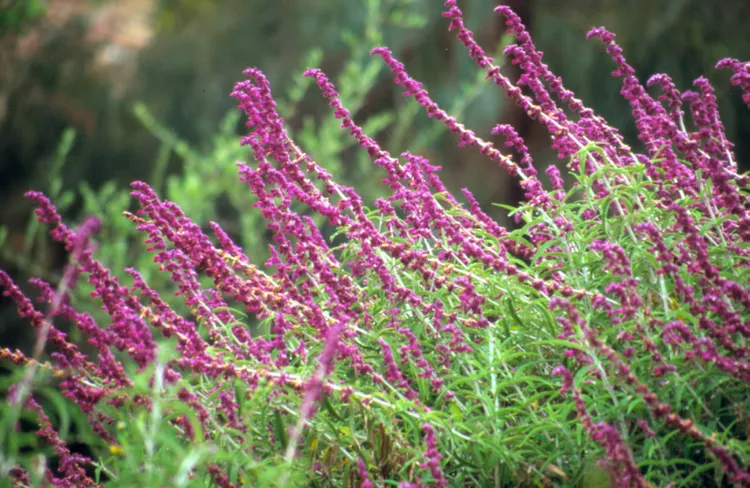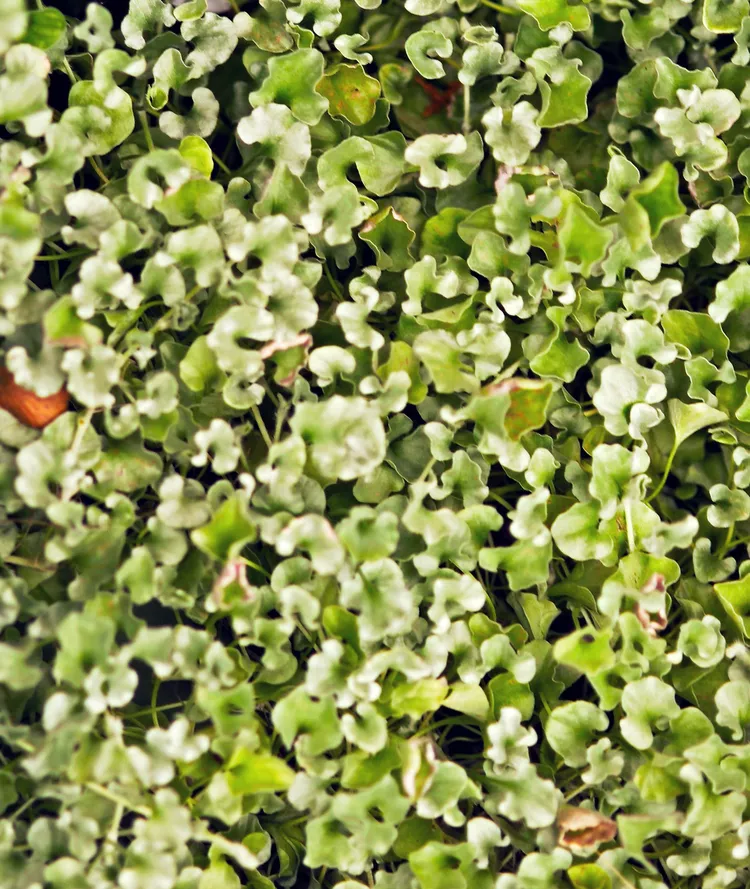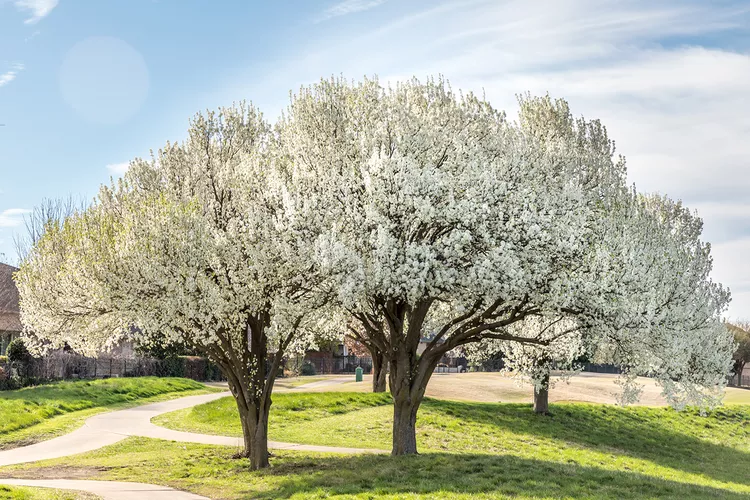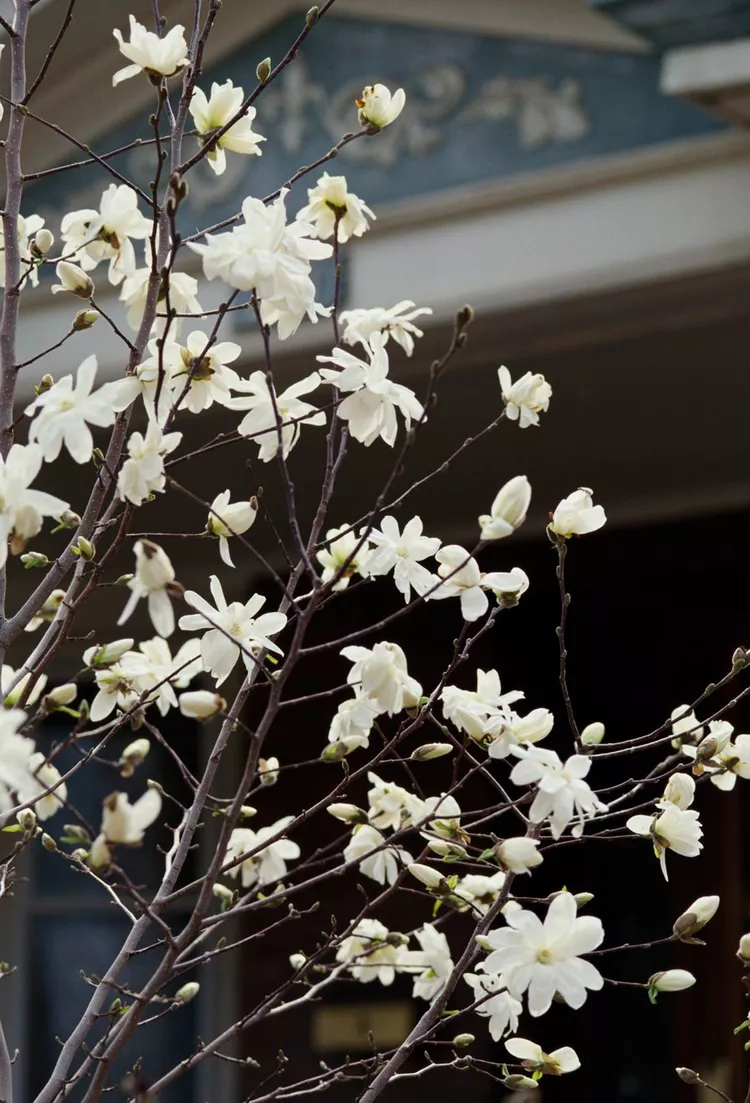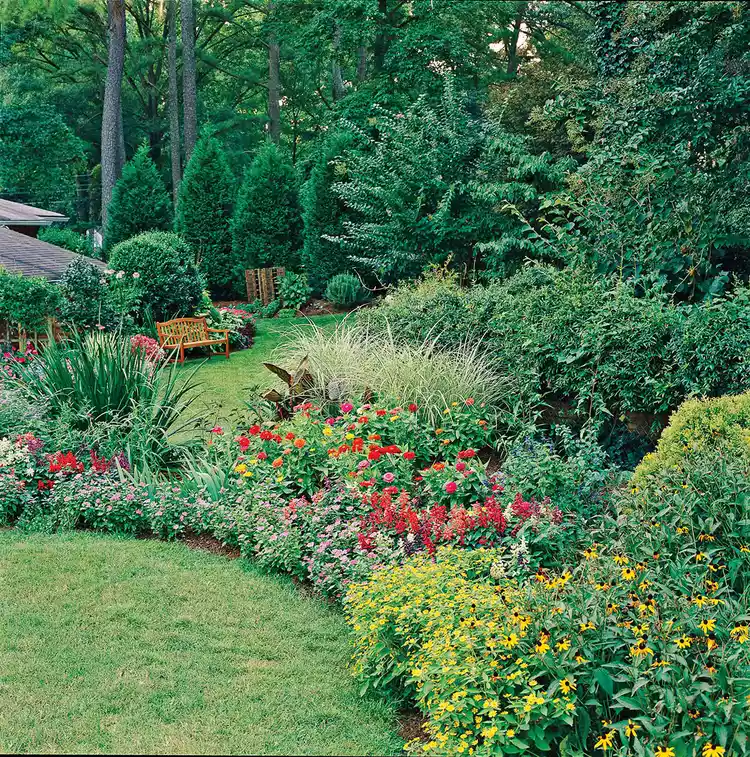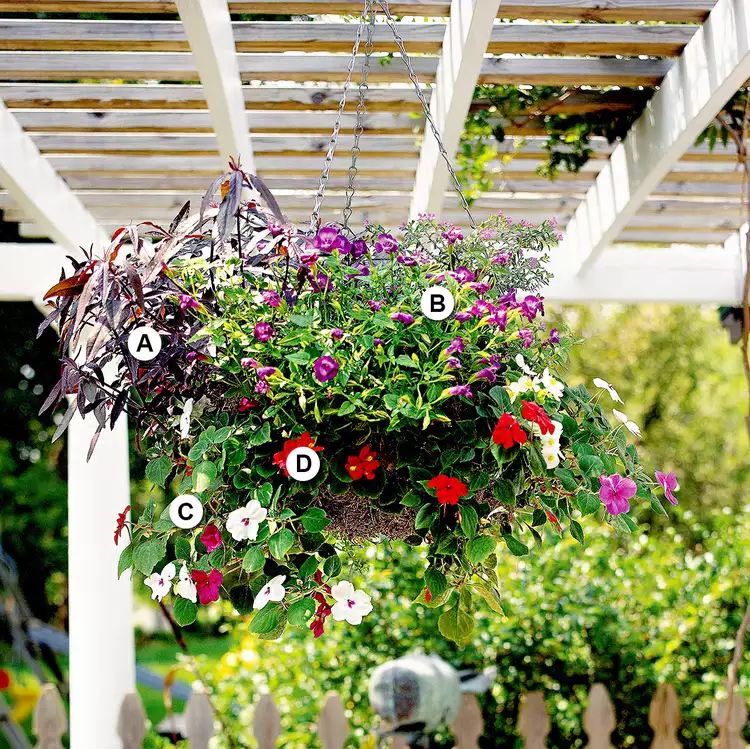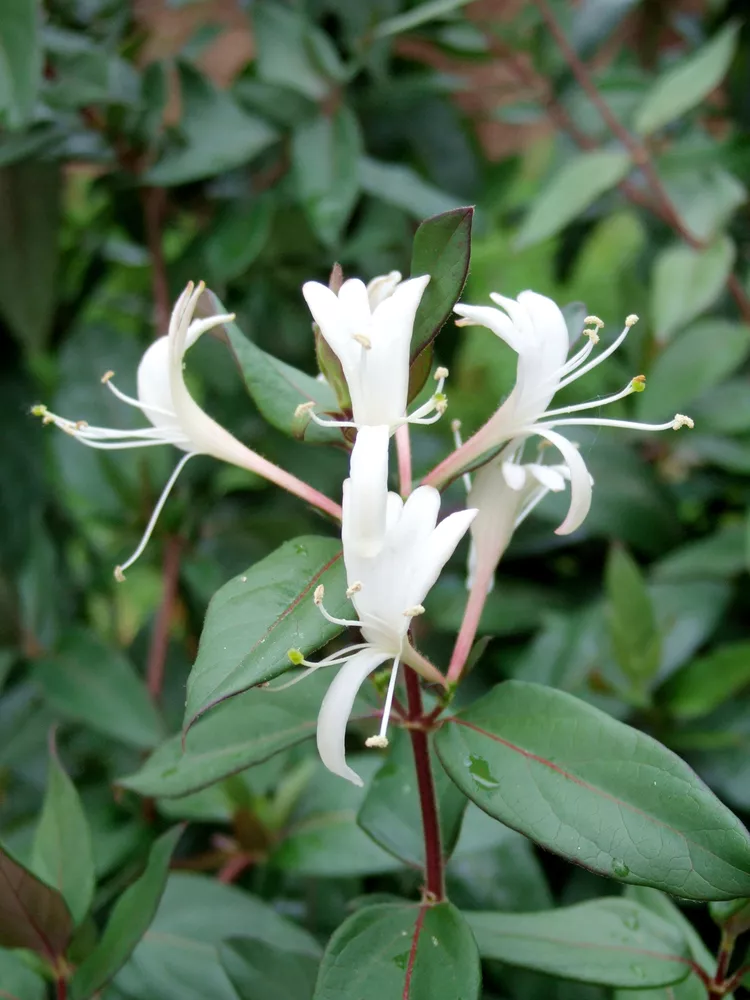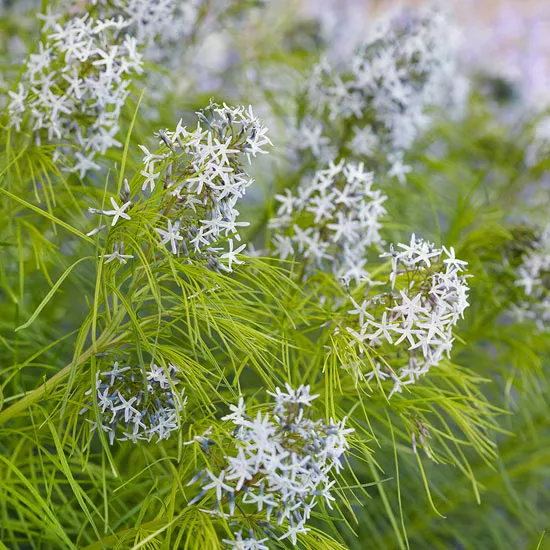
Woody perennial groundcover roses are not in a class of their own like many other rose types. Generally, what people consider groundcover roses are just low-growing shrub roses, but no matter what they are, these plants excel at filling space with continuous blooms. These roses, hardy in Zones 5-10, also tend to be highly disease-resistant and low-maintenance.
Not only do they bloom for almost the entire growing season, but groundcover roses come in almost every color possible (except for true blue). In addition, unlike other common groundcovers, these roses are courteous to their neighbors and grow around them instead of suffocating them.
Groundcover Rose Overview
| Genus Name | Rosa |
| Common Name | Groundcover Rose |
| Plant Type | Rose |
| Light | Part Sun, Sun |
| Height | 1 to 4 feet |
| Width | 2 to 4 feet |
| Flower Color | Orange, Pink, Purple, Red, White, Yellow |
| Foliage Color | Blue/Green |
| Season Features | Fall Bloom, Spring Bloom, Summer Bloom |
| Special Features | Attracts Birds, Good for Containers, Low Maintenance |
| Zones | 10, 5, 6, 7, 8, 9 |
| Propagation | Stem Cuttings |
Where to Plant Groundcover Rose
Grow groundcover roses in sunny areas with well-draining soil enriched with organic matter. They easily fill low spaces of a garden with lots of color. These plants also work exceptionally well trailing over walls, hanging baskets, or window boxes.
How and When to Plant Groundcover Rose
Nursery-Grown Groundcover Roses
Nursery-grown groundcover roses in containers are available at garden centers or by mail order from specialty nurseries.
- Amend the soil with organic matter or compost if needed. Good drainage and rich soil are essential.
- Dig a hole a little wider and the same height as the rose's container.
- Slide the plant out of its container and gently loosen the roots.
- Set the rose in the hole at the same height as it was in the container and backfill with amended soil, pressing down on the soil to remove any air pockets. Water the rose well.
- When planting several roses, space them 4 feet apart, unless the plant tag indicates a smaller size.
You can also plant nursery-grown groundcover roses in containers. Remove the rose from its nursery container and move it to a larger one with drainage holes and filled with well-draining potting soil that has been enriched with compost or other organic matter. Position it at the same height as it was in the nursery container and water it.
Bare-Root Groundcover Roses
Bare-root roses should be planted as soon as the last frost of winter is over.
- Soak the roots in warm water for a couple of hours before planting.
- Dig a hole twice the size of the roots and slightly deeper in well-draining soil amended with organic content.
- Make a small mound in the bottom of the hole to sit the roots on, spreading them out if possible.
- Hold the plant with one hand to position the graft union an inch below soil level and backfill the hole with amended soil using the other hand.
- Press down the soil to remove air pockets and water the planting area well.
Groundcover Rose Care Tips
Once established, groundcover roses need little maintenance.
Light
Like all roses, groundcover roses perform best in full sun. However, because of their disease resistance, these plants can perform well in partial shade. Although plants may not bloom quite as prolifically, there is less risk of disease in part shade than with other types of roses.
Soil and Water
Groundcover roses prefer rich, well-drained soils. Amend the soil with organic matter to keep your plants looking their best. Water roses thoroughly after planting to help them establish. Do this at the base of the plant: Avoid overhead watering to prevent potential disease problems. Keep them watered up until the first frost.
Because these rose plants aren't as dense as a typical groundcover, they don't function to prevent weed growth as regular mat-forming perennials do, so it's a good idea to mulch underneath these roses to reduce potential weed problems.
Temperature and Humidity
Groundcover roses have the same temperature and humidity tolerance as other roses. Too much heat and humidity can be a problem for them, and they don't tolerate cold temperatures below freezing.
Mulch groundcover roses with an organic product in late fall to keep them from dying over the winter. If you live in a windy area, a wind break, such as a fence or a length of burlap, can keep the wind from damaging your plants.
Fertilizer
Use a controlled-release fertilizer only when your plants need it. If they start to look droopy or if the soil in your garden isn't rich in nutrients, feed them once in spring and once in summer. For the amount to use, consult the product label directions.
If your groundcover roses are in a planter, they'll need feeding more regularly, or you can use a slow-release fertilizer.
Pruning
Unlike other rose varieties, deadheading groundcover types isn't necessary. These are such tough plants that they'll continue to bloom even without removing old blooms. However, cutting back roses about two-thirds of the way in late winter or early spring before new growth appears is essential. Doing so will help create dense, full plants with numerous blooms.
Potting and Repotting Groundcover
Groundcover roses do great in pots as long as they have plenty of room for their roots to grow. Shrub roses typically do well in a 15-gallon container. Plant them as you would in the ground, making sure the pots have drainage holes. Use rich, well-draining potting soil, and amend the soil with organic content to add nutrients.
Roses in containers need a little extra care in winter. In cold climates, withhold fertilizer after late July. For winter, move the pot to an unheated but protected location, such as a shed, garage, or basement. Water the plant only once a month if the soil feels dry. In spring, move it back outdoors.
Some gardeners bury the entire container in the garden for the winter. They dig a hole large enough for the container and then pile straw or mulch on and around the plant for protection from the elements.
When the plants get too large for their containers, repot them with fresh amended potting soil in a larger container to keep them growing.
Pests and Problems
Deer love to eat roses, so try one of several deterrents to keep them out of your yard. Ultrasonic deer repellants, deer repellant granules, motion-sensor lights, and even sprinklers are all ways to keep deer from munching on your flowers. If your method stops working, you may need to change it.
Black spot, powdery mildew, and rosette disease are all possible problems for roses. Common garden pests, like aphids and mites, can chew on your plants. Try spraying the plants (avoiding the flowers) with a blast of water to remove them. Insecticidal soaps may be necessary to rid your plants of bugs.
How to Propagate Groundcover Rose
The best way to propagate roses is from cuttings. Follow our guide to cutting and propagating roses for the best and healthiest plants. Water the plants the day before and plan to take cuttings early in the morning.
Types of Groundcover Rose
'Flower Carpet Amber' Rose
Rosa 'Flower Carpet Amber' produces fragrant, golden-apricot flowers over glossy, dark green foliage. The lush greenery is disease-resistant. It grows 2 -1/2 feet tall and 4 feet wide. Zones 5-10
'Flower Carpet Coral' Rose
Rosa 'Flower Carpet Coral' features soft coral-pink single blooms that cover glossy dark green foliage in large clusters of 20 to 30 blooms. The lush greenery is impervious to disease. Plants grow up to 2-1/2 feet tall and 4 feet wide. Zones 5-10
'Flower Carpet Pink' Rose
Rosa 'Flower Carpet Pink' blooms prolifically for five or more months. The pink blooms with white centers develop in clusters 6 to 8 inches across, with as many as 18 flowers each. Plants grow up to 3 feet tall and 4 feet across. Zones 5-10
'Flower Carpet Pink Supreme' Rose
Rosa 'Flower Carpet Pink Supreme' produces hot-pink blooms all summer and fall on a low-growing, disease-resistant plant. It grows 3 feet tall and wide. Zones 4-10
'Flower Carpet Red' Rose
Rosa 'Flower Carpet Red' bursts forth with masses of rich red flowers from late spring to late summer. It grows 3 feet tall and 4 feet wide. Zones 5-10
'Flower Carpet Scarlet' Rose
Rosa 'Flower Carpet Scarlet' bears loads of scarlet semidouble blooms that develop in clusters on a vigorous plant. The glossy, dark green foliage is impervious to disease. Plants grow up to 3 feet tall and 4 feet wide. Zones 5-10
Groundcover Rose Companion Plants
These companion plants share similar sun and soil requirements as groundcover roses and sometimes protect them from pests.
Scented Geranium
Scented geraniums (Pelargonium) have long been a favorite in herb and indoor gardens because they delight the senses with fragrances of flowers or spice. This is one of several herbs credited by gardeners for running off Japanese beetles. The attractive low-growing plant grows as an annual in most areas and as a perennial in Zones 10–11.
Marigolds
Marigolds (Tagetes) are easy to grow and care for. The cheerful appearance of these heat-loving annuals lasts the entire growing season, blooming until frost. Most marigolds bloom in warm shades of oranges, yellows, and reds, but white varieties are available.
Salvia
The astonishing variety of salvias, also known as sage (Salvia spp.), means there are salvias for any garden or purpose. Although blue may immediately come to mind, salvia is available with red, white, and pink blossoms. All of them attract hummingbirds. These are grown as annuals in most parts of the country, but some can be grown as perennials in warm areas.
Verbena
Verbena is a perfect summer plant to reward gardeners with flower stalks that keep blooming all season long, and there's no need to deadhead them. With flowers in shades of blue, pink, purple, red, and white, these charming plants are an excellent addition to any garden bed or border.
New



